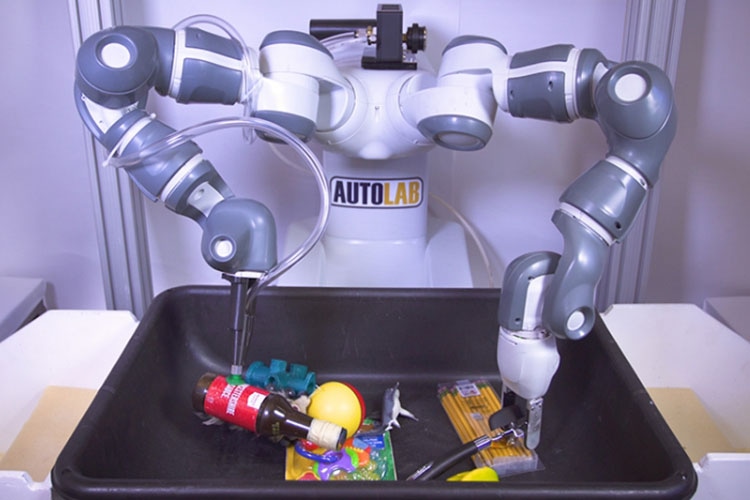Jan 18 2019
Early in their life, humans learn how to pick up objects, from spoons to stuffed animals, with a range of shapes, sizes, and textures.
 A new algorithm helps robots decide which gripper works best for picking up different objects. (Image credit: Adriel Olmos, UC Berkeley)
A new algorithm helps robots decide which gripper works best for picking up different objects. (Image credit: Adriel Olmos, UC Berkeley)
Engineers from UC Berkeley have developed an innovative machine-learning algorithm that can train robots to grasp and pick items with comparable dexterity.
The algorithm assists “ambidextrous” robots provided with different types of grippers—for instance, a parallel-jaw gripper and a suction gripper—to reach a decision of which gripper to use for a given object.
Any single gripper cannot handle all objects. For example, a suction cup cannot create a seal on porous objects such as clothing, and parallel-jaw grippers may not be able to reach both sides of some tools and toys. ‘Ambidextrous’ robots offer greater diversity.
Jeff Mahler, Postdoctoral Researcher, UC Berkeley
Mahler is the lead author of a new paper detailing the study, published in Science Robotics this week.
The technology could be specifically helpful in fulfillment centers for e-commerce companies such as Amazon, which are dependent on robots for packaging.
When you are in a warehouse putting together packages for delivery, objects vary considerably. We need a variety of grippers to handle a variety of objects.
Ken Goldberg, Professor, UC Berkeley
Goldberg has joint appointments in the Department of Electrical Engineering and Computer Sciences and the Department of Industrial Engineering and Operations Research.